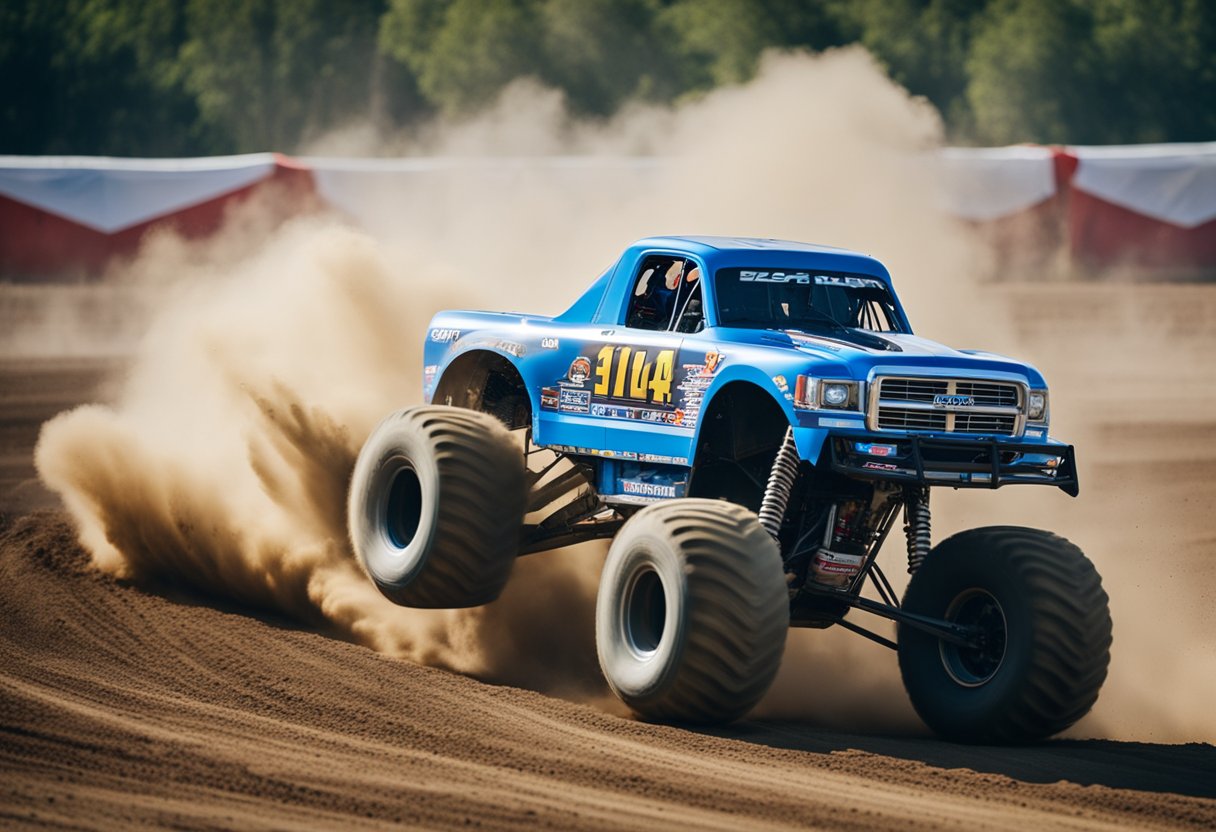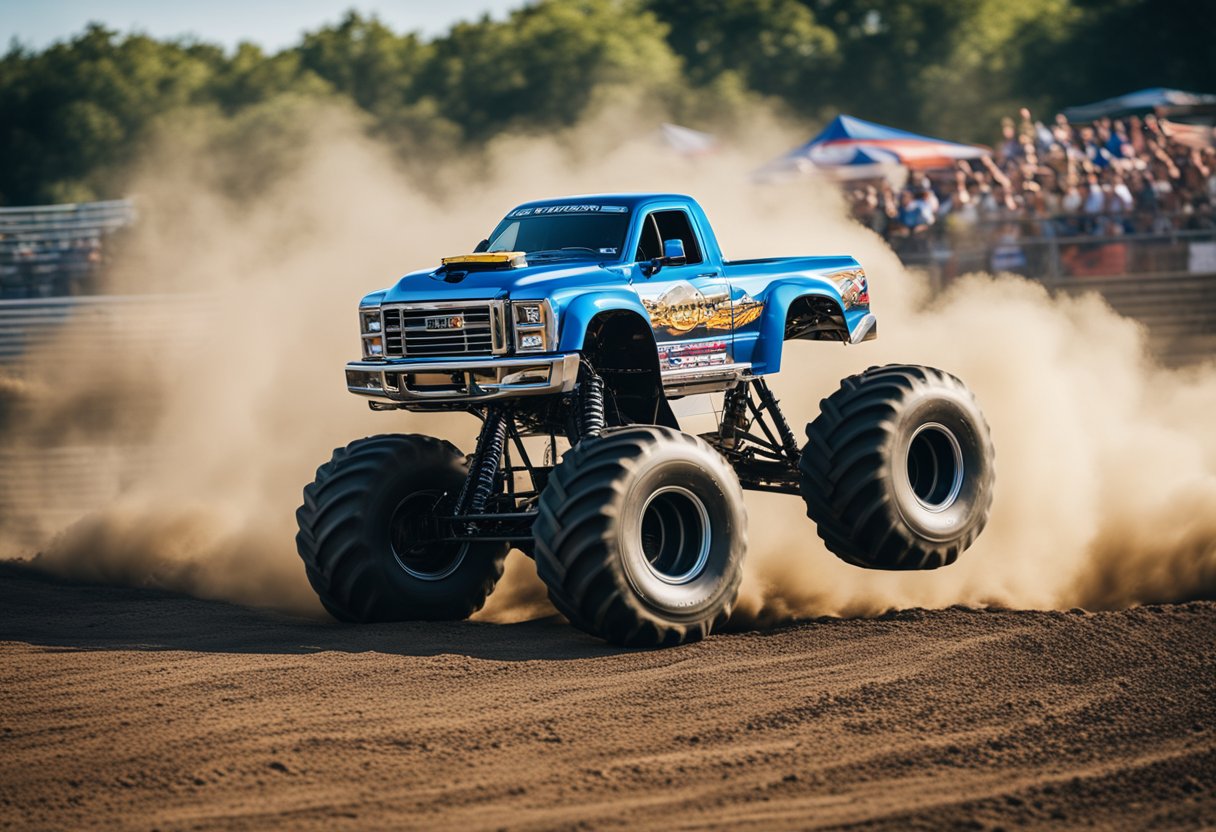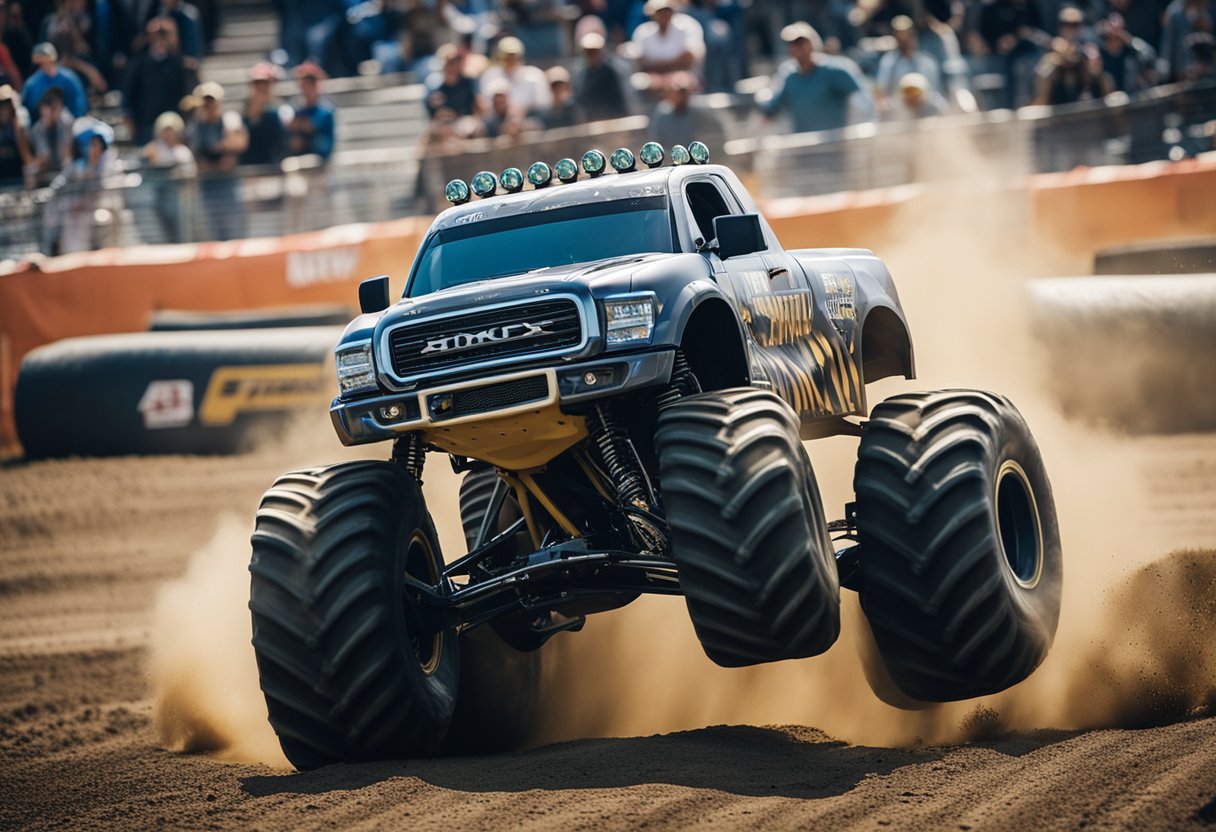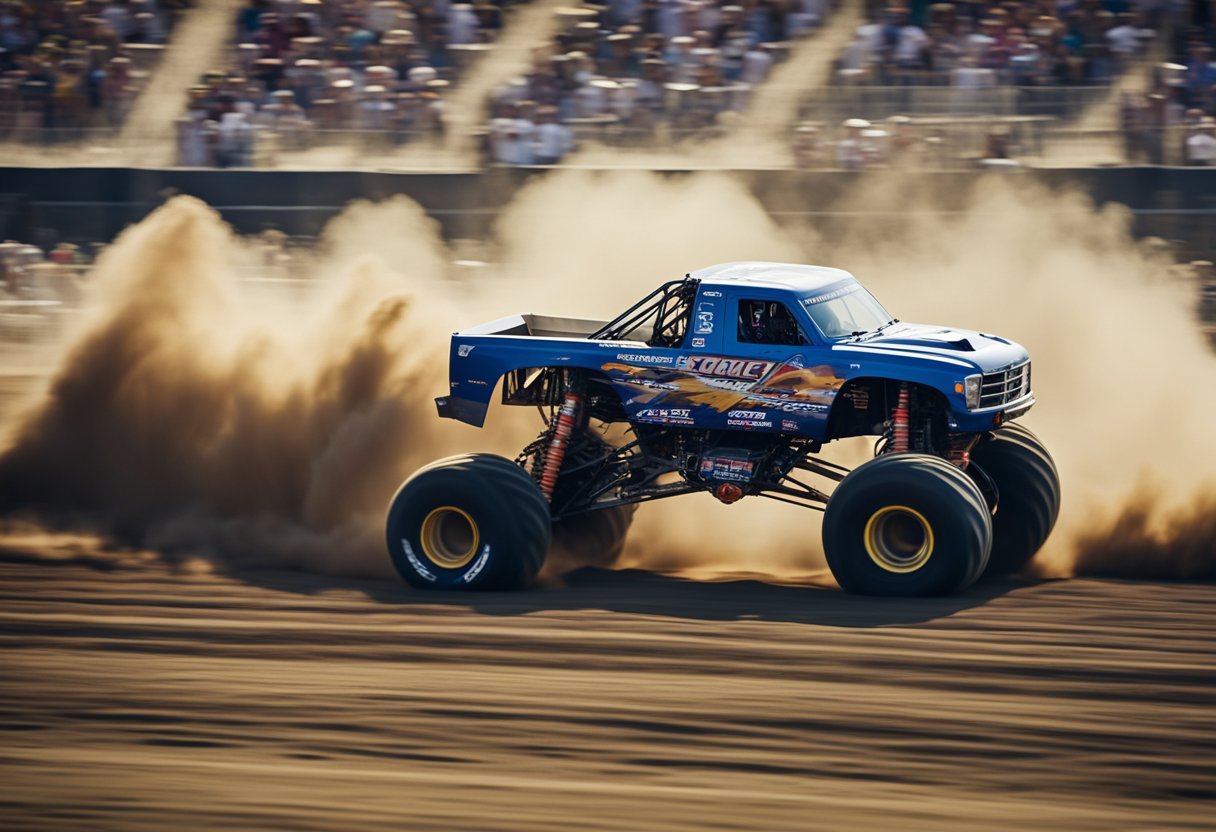Monster trucks captivate audiences with their colossal wheels, deafening engines, and jaw-dropping stunts. Understanding how these behemoths operate includes knowing their speed capabilities which, although not their primary feature, plays a crucial role during competitions and shows. A typical monster truck, while having the ability to speed up considerably thanks to powerful engines, often cruises at moderate speeds compared to conventional race cars. This is due to the intricate balance between power, weight, and the need for precision during monster truck events. The environment in which a monster truck performs also significantly impacts its speed. Contrary to what one might expect, monster truck events are not always about sheer velocity but about the prowess needed to navigate obstacles and perform stunts.

Learning the speed of monster trucks leads to a broader understanding of their design and performance. The mechanics behind these vehicles are a feat of engineering, tailored to withstand the harsh jumps and crashes typical in a monster truck rally. Most monster trucks are equipped with engines capable of producing 1,500 horsepower or more, propelling the trucks to high speeds rather briefly during events. Iterative design improvements have also allowed these trucks to become faster and more agile over the years. However, while speed is an impressive aspect, it is the harmony of all elements—speed, power, and maneuverability—that brings the monster truck spectacle to life.
Contents
Key Takeaways
- Monster trucks are engineered for power and stunts more than high speeds.
- The speed of monster trucks is influenced by event types and track conditions.
- Design evolution has enhanced monster truck speed and agility.
History and Evolution of Monster Trucks
https://www.youtube.com/watch?v=UlRv4dzP9e4&embed=true
The monstrous vehicles we see crushing cars and flying through the air at events like Monster Jam originated from modifications to pickup trucks in the 1970s and have since become a distinct entertainment sport with a dedicated following.
The Birth of Monster Trucks
My research into the concept of “monster trucks” brings me to Bob Chandler, a pivotal figure in the early days of their creation. He modified his own 1974 Ford F-250 pickup and named it “Bigfoot,” which is widely considered the first monster truck. This vehicle was not initially designed for competition; rather, it was Chandler’s promotional tool for his four-wheel drive performance shop. The astonishing sights of enormous trucks effortlessly cruising over cars caught the public’s attention and laid the groundwork for monster truck shows.
Iconic Monster Trucks in History
“Bigfoot” set the stage for a number of iconic monster trucks that would follow. “Grave Digger,” driven by Dennis Anderson, became one of the most revered names in the industry. It began as a mud bogger before evolving into a towering monster truck, recognizable by its haunting green and black livery. A key moment for these gigantic vehicles came with the formation of the US Hot Rod Association (USHRA) and its sanctioned events, which thrust the machines, and their drivers, into the limelight. As competition increased, other memorable trucks like “Bear Foot” came into the scene and left a significant mark in the annals of monster truck history.
Evolution of Design and Function
Over time, I’ve observed a marked evolution in the design and function of monster trucks, shifting from modified personal pickups to engineered marvels purpose-built for performance and safety. The Monster Truck Racing Association (MTRA) has played an essential role in standardizing construction and safety protocols. Today’s trucks come equipped with custom tube-frame chassis, sophisticated shock systems, and safety features like RII (Remote Ignition Interrupter) to ensure driver safety at all times. Engine placements have been optimized over the years, with many designs placing them behind the driver to balance weight distribution for better control during stunts. The events themselves, such as Monster Jam, attract large audiences worldwide, showcasing the pinnacle of what these mechanical beasts can achieve. These trucks, with their 1,500 horsepower engines, are a far cry from their utilitarian forerunners, displaying a balance of raw power and finesse that encapsulates the essence of their continuous evolution.
Monster Truck Design and Specifications

In exploring the capabilities of monster trucks, I’ll focus on their engine power, tire and suspension dynamics, as well as the intricacies of their chassis and steering systems. These components are pivotal in defining a monster truck’s performance.
Engine and Power
The heart of a monster truck lies in its engine. These trucks often feature custom-built, supercharged V8 engines which run on methanol fuel. This provides a clean-burning, high-octane source that’s capable of generating immense horsepower. Typically, a monster truck’s engine will produce anywhere between 1,500 to 2,000 horsepower, enabling these behemoths to achieve surprising speeds and acceleration.
Tires and Suspension
Tires are another key aspect of monster trucks, contributing to their iconic look and function. Sporting oversized tires that can be up to 66 inches in height, they provide vital traction and stability. The suspension systems in these trucks are engineered to absorb the huge impacts from jumps and stunts. Advanced shock absorbers and linkage systems are necessary to withstand the punishing terrains.
Chassis and Bodies
Monster trucks utilize a tube-frame chassis design, which offers high strength with relative lightweight. This foundational structure supports all other components and is pivotal for the truck’s durability. The bodies are usually made from fiberglass, presenting a variety of custom and often flamboyant designs while keeping weight to a minimum to enhance performance.
Four-Wheel Steering System
A sophisticated four-wheel steering system provides superior maneuverability, allowing the driver to steer the rear wheels in conjunction with the front. This enables tight turns and improved handling, which is essential in navigating the complex obstacle courses monster trucks often compete on. This capability, coupled with the truck’s power and suspension, makes for a nimble giant, despite its intimidating size.
Performance and Capabilities
https://www.youtube.com/watch?v=UhiYVAF9HQM&embed=true
In discussing the performance and capabilities of monster trucks, I’ll zero in on their speed and acceleration, their handling and control, as well as the stunts and freestyle exhibitions that showcase their power and agility.
Speed and Acceleration
Monster trucks are engineered to accelerate quickly due to their powerful engines, which can produce anywhere from 1,500 to 2,000 horsepower. This immense power allows them to reach higher speeds rapidly, even though their top speeds are typically capped around 70 to 100 mph for safety during events. Their acceleration is a sight to behold, going from 0 to 60 mph in just a few seconds, demonstrating both force and velocity.
Handling and Control
Despite their hefty build, monster trucks have remarkable control. Their sophisticated shock absorption systems and large tires allow them to manage rough terrain and obstacles with relative ease. I find it noteworthy that the design of a monster truck contributes significantly to its stability, thus enhancing its control. Drivers must possess exceptional skill to navigate these vehicles as they do, especially during tight turns or while navigating obstacle courses.
Stunts and Freestyle Exhibitions
When it comes to stunts and freestyle exhibitions, monster trucks truly shine. They are able to perform gravity-defying feats such as long-distance jumps and backflips. Stunts like donuts and wheelies not only demonstrate the truck’s power and the driver’s prowess, but they also captivate the audience with their dynamic and dramatic displays. These vehicles flex their muscles in freestyle events, where drivers creatively showcase their truck’s capabilities in choreographed routines that are equal parts spectacle and technical execution.
Monster Truck Racing
https://www.youtube.com/watch?v=DoybeuPU2t8&embed=true
In my exploration of monster truck racing, I find it to be an electrifying segment of motorsport that combines high-speed competition with spectacular stunts. The powerful machines are capable of reaching significant speeds despite their massive size.
Racing Events
At the heart of monster truck racing are the racing events, which see these gargantuan vehicles go head-to-head in timed competitions or freestyle stunt showcases. Events like those part of the Monster Jam circuit are pivotal, as they set the stage for trucks to not only compete but also to perform jaw-dropping feats to the delight of audiences. When I look at the factors determining a truck’s performance, such as the rig’s specifications and the driver’s skill, it becomes evident why some trucks and drivers consistently excel.
Tracks and Courses
The tracks and courses in monster truck racing are meticulously designed to challenge even the most experienced driver. They often include obstacles such as cars to crush, ramps for jumps, and sharp turns to test the agility of the trucks. Racing typically takes place on dirt tracks that can be modified to increase difficulty, from adding mud pits to constructing steeper jumps. This variety ensures that no two races are identical and that both speed and control are critical to taking home the win.
Racing Techniques
When it comes to racing techniques, successful drivers must possess a combination of aggression, precision, and finesse. Techniques vary from choosing the optimal moment to accelerate, which can catapult a truck into the lead, to mastering throttle control, which can prevent a potential rollover. The engineering behind these monsters is no less paramount, with many trucks equipped with two-speed transmissions and running 1500 horsepower, enabling breathtaking speed and agility.
Monster truck racing is a multifaceted sport where raw power meets refined skill. From the roar of the engines to the cheer of the crowds, each race unfolds as a testament to the high-octane excitement that only monster trucks can deliver.
Safety Measures and Considerations

In the realm of monster truck events, prioritizing safety is paramount for both drivers and spectators. My focus here is on the critical components of safety that include rigorous measures for driver protection, stringent event regulations, and meticulous truck maintenance.
Driver Safety
To ensure my safety as a driver, I always use a custom-fitted roll cage designed to protect me in case of rollovers. The roll cage is a robust structure that forms a protective barrier around me. My seating is further secured with a five-point seat belt system, which keeps me firmly in place during the high-intensity maneuvers of a monster truck rally. Additionally, easy access to a fire extinguisher is a must, allowing me to quickly respond in case of a fire outbreak.
Event Regulations
Event safety extends beyond my personal gear. I adhere to specific regulations set by the event organizers, which dictate the minimum safety requirements for every participant. These regulations are in place to ensure not only my safety but that of the crew and the audience. They often include restrictions on the maximum speed during events, specific guidelines for the monster truck design, and emergency response plans in case of accidents.
Truck Maintenance
The monster trucks we drive are massive machines that require constant and thorough maintenance. Before any event, I ensure my truck has gone through a detailed inspection process. Key safety features such as brakes, tires, and the engine are checked and double-checked. Regular maintenance not only prevents mechanical failures that could lead to safety hazards but also ensures the vehicle performs optimally when I’m navigating the course.
Monster Trucks in Popular Culture and Entertainment

My focus here is on the significant impact of monster trucks on popular culture and entertainment, achieved through media exposure and live shows.
Media and Promotion
Monster trucks have become a considerable part of the entertainment world, thanks in part to their presence in various media. I’ve noted that promotions often involve televised specials or series that showcase these behemoths in action. Monster Jam, for example, is a widely recognized entity that has propelled the popularity of monster trucks through extensive television coverage. It often features the Sin City Hustler, highlighting its performance to captivate audiences.
- Television: Monster Jam events are broadcast on major sports channels.
- Online Platforms: Exclusive clips and full episodes on websites and social media.
Shows and Exhibits
When I look at monster truck shows and exhibits, the emphasis is on adrenaline-pumping entertainment. I’ve seen that live events allow audiences to experience the raw power and excitement of monster trucks first-hand. Here’s how these shows and exhibits usually play out:
- Live Demonstrations: Events like Monster Jam bring the thrill of monster trucks to stadiums worldwide.
- Feats of Strength: Monster trucks perform spectacular stunts, such as crushing rows of cars and high-flying jumps.
In terms of specifics, the Sin City Hustler, one of the world-famous monster trucks, excites audiences with its unique design and incredible power at various shows and exhibits. My observation at these events consistently reveals the sheer fascination and joy reflected on the faces of spectators of all ages.
Environmental Impact and Sustainability

In discussing the sustainability of monster trucks, I focus on two critical areas: their considerable fuel consumption and the measures taken to control noise and environmental pollution.
Fuel Consumption
Monster trucks consume a significant amount of fuel during events. Despite variations based on specific designs and engine efficiencies, a typical monster truck can consume up to 2.5 gallons of methanol per minute during a performance. Methanol is often chosen over gasoline because it provides high performance and is less flammable, which is safer for drivers during stunts and crashes.
Noise and Pollution Control
The roar of a monster truck is unmistakable; however, it contributes to noise pollution. Steps to mitigate this include sound barriers at venues and limited event durations. As for environmental pollution, monster trucks equipped with catalytic converters and proper tuning aim to reduce their emissions. My attention to air quality compels me to affirm that more sophisticated technologies and cleaner fuel alternatives are continually being assessed to align with environmental sustainability goals.
Conclusion
https://www.youtube.com/watch?v=nYGSeulRhbQ&embed=true
In assessing the speed capabilities of monster trucks, I’ve considered the various factors that influence their performance. Monster trucks are not built for high speed but for power and agility to overcome obstacles and execute stunts. Typically, these vehicles can reach speeds up to 60 miles per hour; however, acceleration is more indicative of their performance, with the ability to go from 0 to 60 in just a few seconds due to powerful engines.
The design of monster trucks emphasizes durability and off-road capability, which is why comparing their speed to conventional vehicles isn’t a direct correlation. The intricate engineering behind these trucks prioritizes the suspension system and tires, both essential for monster truck shows where jumping and crushing are the main attractions.
For enthusiasts looking to further understand the mechanisms that allow these trucks to perform such feats, resources detailing the development of a dynamical model for remote-controlled monster trucks could be insightful. Moreover, there are papers addressing broader topics including the accountability process following a monster truck tragedy, reflecting on the implications of these events beyond their entertainment value.
Through my exploration, I’ve corroborated that monster trucks bring a unique combination of power and spectacle to motorsports. They might not reach the top speeds seen in Formula 1 or NASCAR, but their purpose is starkly different, focusing on showmanship and raw power.
Frequently Asked Questions
https://www.youtube.com/watch?v=rdbYCLpt7BU&embed=true
In my experience with monster trucks, I’ve gathered details about their performance, construction, and specifications that fans and newcomers are often curious about. Here I’m addressing some of the most frequently asked questions to paint a clearer picture of these automotive behemoths.
What is the top speed of the fastest monster truck?
The fastest monster trucks can reach top speeds of approximately 100 mph. This high velocity is rarely reached during events due to the limited space and the nature of the obstacle-filled courses they run on.
How quickly can a monster truck accelerate from 0 to 60 mph?
A monster truck can typically accelerate from 0 to 60 mph in about 3 seconds, thanks to their specially designed engines and lightweight frames. This rapid acceleration is essential for performing jumps and stunts during competitions.
What amount of horsepower is typical for a monster truck?
The engines in monster trucks are incredibly powerful, often producing between 1,500 to 2,000 horsepower. This enables them to perform ludicrous jumps and wheelies, as well as to traverse difficult terrains during events.
How long does the construction of a monster truck typically take?
Building a monster truck from scratch can take about 1,200 hours of labor. This process involves custom fabrication, rigorous testing, and tuning to ensure that the trucks are both safe and competitive for events.
What is the average weight of a competitive monster truck?
The average weight of a competitive monster truck is around 12,000 pounds, which is necessary to withstand the immense forces during jumps and tricks while maintaining enough mass for pulverizing obstacles.
Are ear protection devices provided at Monster Jam events?
Ear protection devices are typically provided at Monster Jam events or recommended for all attendees. The high decibel levels produced by these trucks’ engines can be harmful, so it’s best to use earplugs or earmuffs to protect one’s hearing.

